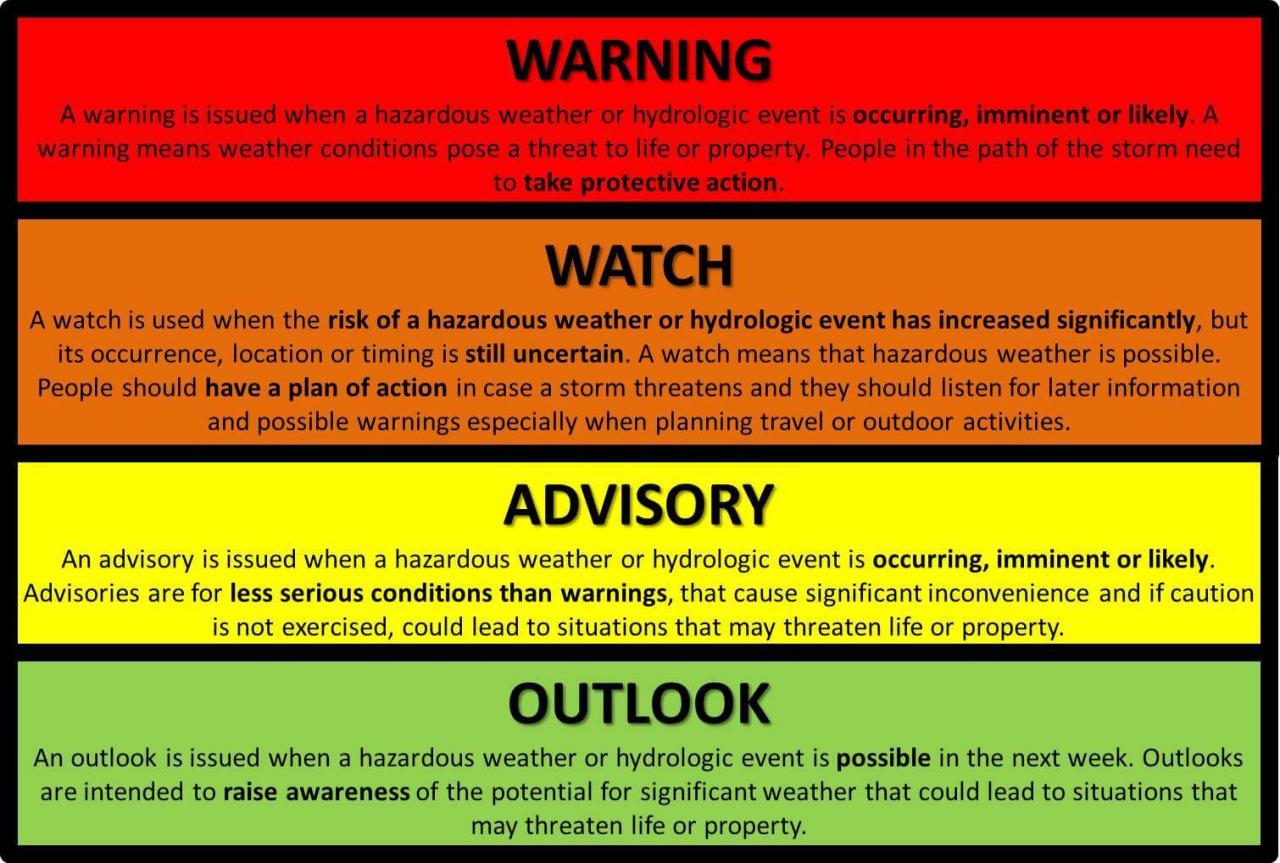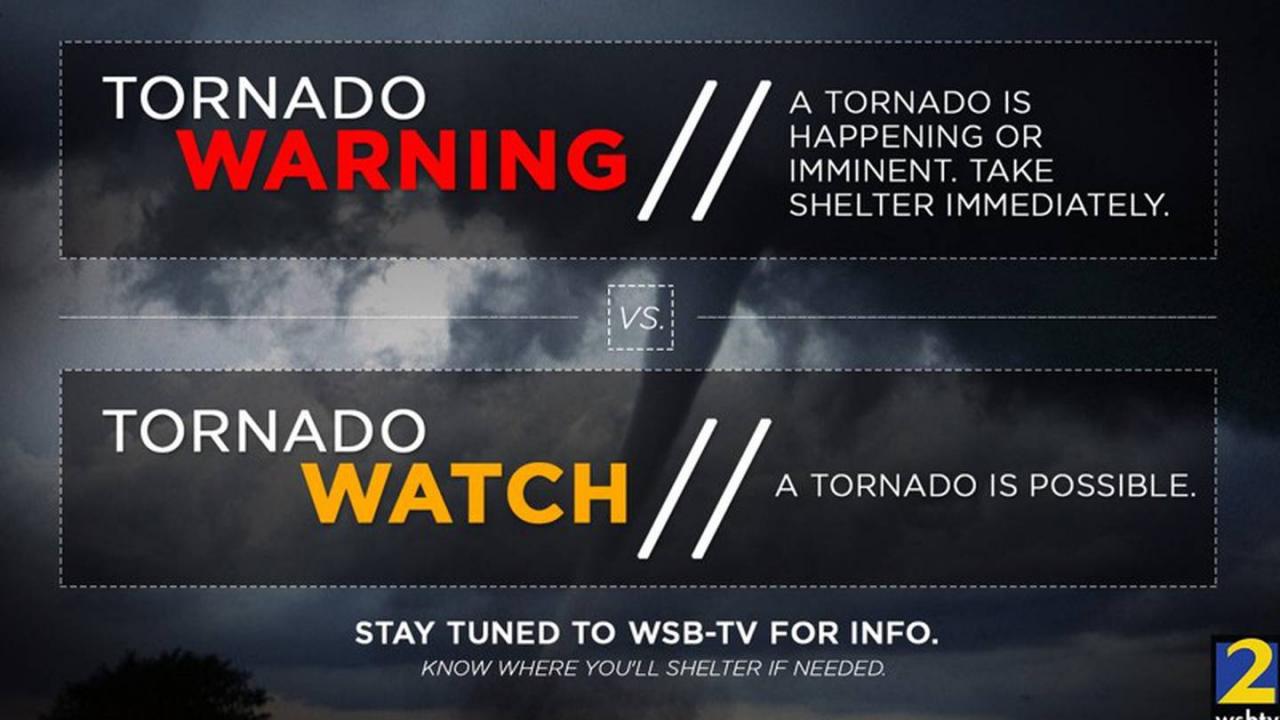Is a watch or warning worse – In the realm of risk management, the distinction between a watch and a warning can have profound implications. While both serve as alerts, their severity and potential impact vary significantly, shaping the appropriate response and preparedness measures.
Understanding the nuances between these two types of alerts is crucial for individuals and communities to navigate potential hazards effectively.
Watch vs. Warning: A Guide to Risk Management Alerts

In the realm of risk management, timely alerts are crucial for safeguarding lives and property. Two key types of alerts used to communicate potential hazards are “watches” and “warnings.” While both serve as indicators of impending danger, they differ in severity and the actions they warrant.
Definition and Distinction
A watchis issued when conditions are favorable for a hazard to develop or worsen. It serves as a heads-up, urging people to monitor the situation closely and prepare for possible action.
A warning, on the other hand, is issued when a hazard is imminent or already occurring. It signifies a higher level of danger and requires immediate action to protect life and property.
Learn about the history, safety measures, and recovery efforts related to the Elkhorn Nebraska Tornado . This comprehensive guide provides insights into the devastating event, offering valuable information for preparedness and community support.
Severity and Impact, Is a watch or warning worse
The severity of a hazard determines whether a watch or warning is issued. Watches are typically issued for events with a lower likelihood or less severe impact, while warnings are reserved for more serious or imminent threats.
For instance, a watch might be issued for a thunderstorm that is expected to produce heavy rain, but a warning would be issued if the storm is producing tornadoes or hail.
Issuance and Dissemination
Watches and warnings are issued by authorized agencies, such as the National Weather Service in the United States. Criteria for issuing these alerts vary depending on the type of hazard and the severity of the threat.
Watches and warnings are disseminated to the public through various channels, including weather forecasts, mobile alerts, and social media.
Response and Preparedness
The level of alert influences the appropriate response. In response to a watch, individuals should stay informed, monitor the situation, and be prepared to take action if necessary.
Celebrate the Dutch monarchy with King’s Day , a vibrant celebration of history, culture, and community. This annual event honors the birthday of King Willem-Alexander and showcases the Netherlands’ unique spirit. From street parades to orange-themed festivities, Kingsday Netherlands is a must-see for anyone interested in Dutch traditions.
When a warning is issued, immediate action is crucial. People should seek shelter, follow evacuation orders, and take other steps to protect themselves and their property.
Public Perception and Understanding
Public perception of watches and warnings is crucial for effective response. However, studies have shown that people often underestimate the difference between the two alerts and may not take appropriate action.
Improving public understanding of watches and warnings involves clear communication, education campaigns, and exercises to simulate real-world scenarios.
Wrap-Up

In conclusion, the difference between a watch and a warning lies not only in their severity but also in their intended purpose and the actions they trigger. By recognizing these distinctions, individuals and communities can enhance their preparedness and response strategies, ultimately safeguarding themselves from the potential consequences of impending hazards.
The Netherlands Kings Day is a grand spectacle that embodies Dutch unity and pride. The festivities, centered around the royal family, bring together people from all walks of life. Whether you’re witnessing the traditional boat parade in Amsterdam or attending a local festival, the infectious enthusiasm will leave you mesmerized.
FAQ Compilation: Is A Watch Or Warning Worse
What is the key difference between a watch and a warning?
A watch indicates a potential threat or hazard, while a warning signifies an imminent or ongoing hazard that requires immediate action.
Who is responsible for issuing watches and warnings?
Government agencies, such as the National Weather Service or emergency management organizations, are typically responsible for issuing watches and warnings.
How should I respond to a watch or warning?
During a watch, stay informed and monitor the situation. In case of a warning, take immediate action as directed by authorities.
In the aftermath of the devastating Lincoln Nebraska Tornado , the community is resilient and determined to rebuild. The storm left a trail of destruction, but it also sparked an outpouring of support from around the country. As the city recovers, the spirit of Nebraska shines through, reminding us of the power of human resilience.
